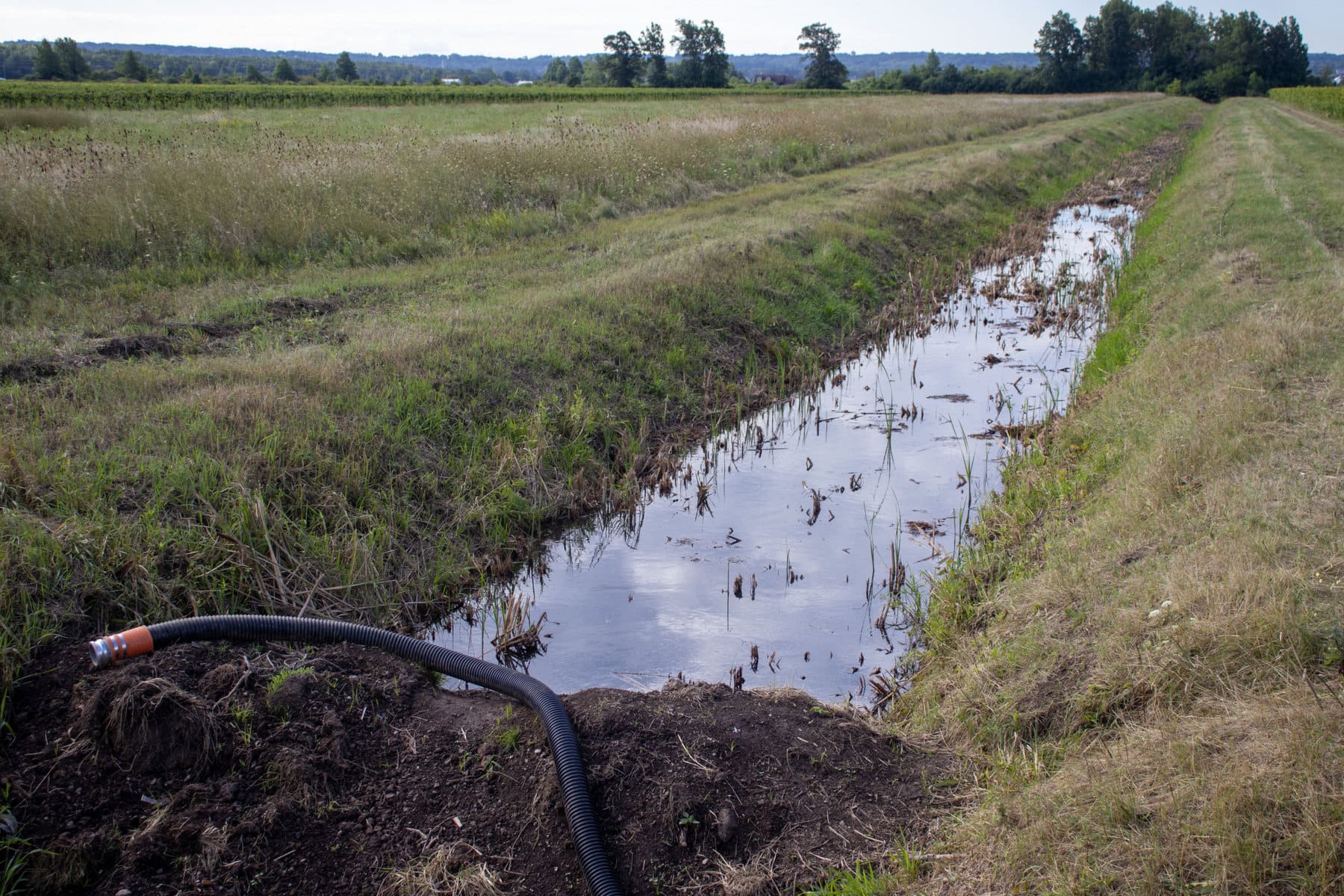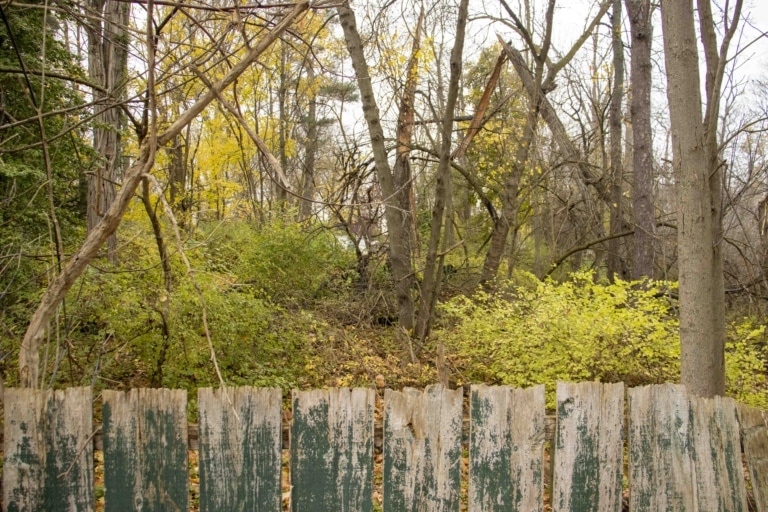It’s been four weeks since a mysterious “organic pollutant” showed up in the Cole municipal drain that runs from Line 5 to 6 in rural Niagara-on-the-Lake.
Much remains unknown, including exactly what the pollutant was. After councillors were updated publicly on Monday evening, here’s what we know — and don’t know — so far:
After the first six days, the town accumulated a hefty bill of over $650,000. As of Monday, the cost is $873,000 and counting.
The town responded to a call about sewage odour and discolouration in the water of the drain on Aug. 17. After the town assessed the issue, the environment ministry and the province’s Spills Action Centre were contacted.
A ministry official “directed” the town to hire a contractor to remove the substance, to hire an environmental consultant and to keep an eye on the site 24/7. The town installed four berms to contain the substance.
The town hired Accuworx to handle the removal and in total 1.8 million litres was disposed of.
The town’s environmental consultant said the source of the organic pollutant is still unknown. However, early results showed the substance did not pose any threat to humans or wildlife.
“We know the family of material and the way it behaves in the environment, but the exact source and the exact substance remains unknown at this time,” said Will Armes, the lead environmental engineer and project director at GHD. He also is the town’s environmental consultant.
Coun. Erwin Wiens noted it’s been four weeks and the town is no closer to identifying the source.
“I can tell you maybe some things that it’s not, but we could have told you that on the first day,” said Armes.
“That would have actually been helpful to know what it was not on the first day,” Wiens responded.
Though the ministry gave verbal and written direction to the town to clean it up, it did not officially order the town to clean it. There is a difference between a directive and an order, which has been unclear from the outset.
Does this mean it was a voluntary cleanup?
It wasn’t “entirely voluntary,” said chief administrative officer Marnie Cluckie.
The ministry official who visited the site gave verbal direction, followed by a written directive, to clean up the spill and hire an environmental consultant.
“if you’ve ever dealt with the ministries before, you know that if you do not comply, they do issue orders to you and it does create an adversarial relationship,” said Cluckie.
She said only the ministry could definitively answer whether it would have issued a formal order to do the cleanup.
However, the town’s legal counsel “identified that in their experience, where the field officer issues a written directive, if it is not followed, a field officer will, more often than not, generate an order.”
The town says its initiative to clean the spill without a formal order was an attempt to control costs because if a formal order was issued, the costs could have risen even more.
“In my experience it is often the ministry’s practice to require more than what really is necessary,” said Dennis O’Leary, the town’s external legal counsel from Aird & Berlis LLP.
“They take a very conservative approach and would rather see you do everything, rather than what’s necessary or what is the most efficient way to respond.”
O’Leary said the advice he gave the town early on was to try to negotiate with the ministry and to attempt to avoid having a formal order issued by the ministry.
A formal order may have contained a number of things that, in hindsight, didn’t need to be done, he said.
“It could be that much more costly to follow all the steps in a formal order — and if you want to try and avoid some of those steps then you’ll have to appeal that order to a director,” he said.
Having taken the initiative to clean the spill without a formal order, Cluckie said the town was able to retain more control of the process, which she said saved money.
The town also trimmed costs by sending some of the pollutant to the Port Weller wastewater treatment plant.
Exact figures on how much the town saved weren’t available by press time.
The town could have saved even more if it had brought the substance to a municipal wastewater treatment plant in the beginning, Armes said. However, water sample results were required before that was possible.
Instead, about 1.1 million litres were disposed of at Mors Refining in Beamsville from Aug. 18 to 20 while the town waited for the test data.
“We did get those samples very early on in the process and once those results were available we were successful in switching up the disposal alternative,” said Armes.
As a result, the remaining 700,000 litres were taken to the NOTL and Port Weller sewage treatment plants.
An investigation to identify the source of the pollutant is still underway. Work is being done to assess the water and sediment quality, as well as physical and chemical analysis.
Lord Mayor Betty Disero suggested councillors, residents and media should be careful with what they say so that they don’t “stir people up into a frenzy.”
The town has been clear that it is worried about whether its insurance will cover the costs of the spill.
Asked whether a direct order from the ministry to clean the spill would have helped the town’s case for an insurance claim, Cluckie said she was explicitly directed not to discuss insurance with the media.











